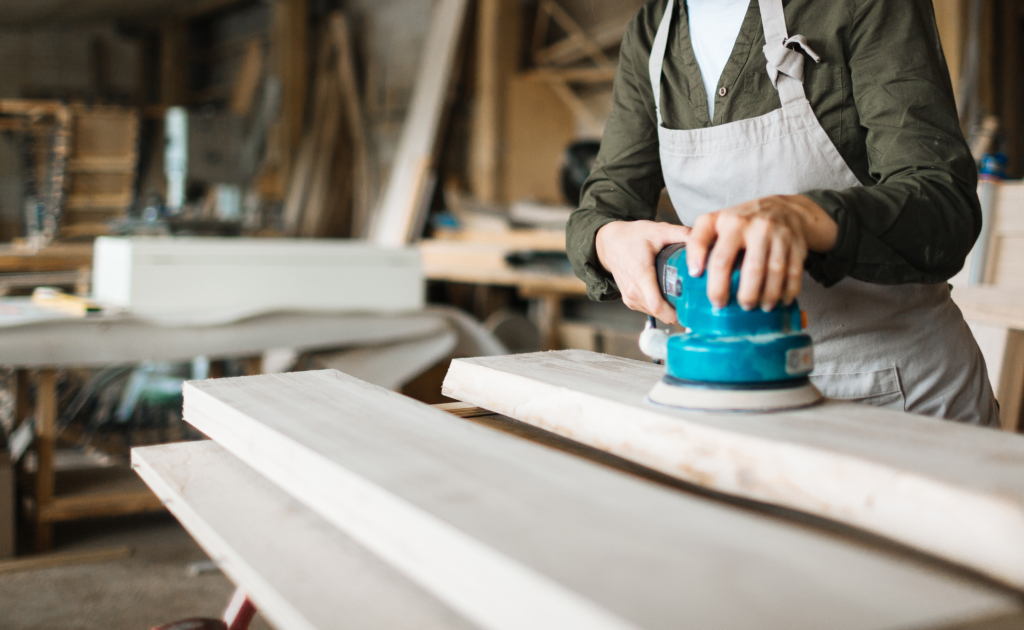How to keep your workshop dust-free

While woodworking and sawdust are inseparable, years of site visits have convinced us that the most successful workshops are generally the cleanest.
There are good reasons for that correlation. Dust slows your work and compromises your output (have you ever had a spattering of sawdust ruin an otherwise immaculate coat of paint?) It’s a significant fire risk. Lastly, and most seriously, it’s a major health hazard.
The first two points are self-explanatory, but the last is not so obvious. Any process that generates sawdust will also be releasing invisible clouds of PM2.5 particulates – tiny airborne wood fragments that you inhale and can’t always cough up. These can cause asthma and other respiratory diseases.
The most basic anti-sawdust measure is to sharpen your tools and invest in a plentiful supply of high-quality abrasives. Redwood’s partner company, Sia Abrasives, offers a wide range of products that are all designed to minimise the release of airborne dust. Replacing old, clogged sandpapers and sanding belts is always a smart idea.
But what else can you do?
1. Declutter
Sawdust, like snowfall, forms drifts. Tools left out on worktops or floors make it harder to tackle the mess. You can simplify the process of dust management by hanging your tools from the walls or ceiling using baskets, loops, dedicated brackets or magstrips. Have trouble putting things to bed at the end of the working day? Try the old trick of outlining the tool’s dedicated spot with a marker pen…
2. Shop Vac
If you don’t already have one of these handy devices, you’re in a minority. Today’s shop vacuums are noise-controlled to protect your hearing, and can double up as dust extractors simply by connecting the hose to the dedicated port on a compatible tool. Given the importance of a daily whizz-round, a good shop vac should be at the top of your priority list.
3. Air Filters (aka Scrubbers)
When you think you’re outgrowing your shop vac, it’s time to invest in an air filter. The standard filter is a box about the size of an old-fashioned desktop PC with a motorised fan that pulls air through a series of progressively smaller filters (replace early and often).
You’ll likely want to position the filter’s air intake in the area where you generate most sawdust, but a modern filter will have no problem scrubbing the entire air content of a typical workshop, up to and including the far corners. If you’re keen on purchasing an air filter, read up on volume ratings, and do some back-of-an-envelope calculations so you’ll know how fast your chosen unit will do its work. (Ten minutes is a good target.)
4. Respirator or mask
Air filter not coping with the torrent of sawdust? You’ll need a facemask or similar to keep the nasties out of your airways, and you should take advice from your vendor as to which of the solutions on offer is most appropriate for your needs. The cheapest option is a disposable paper mask, and the most expensive is a full-face shield with a visor, fan, filters and a cooling mechanism. ‘Gas mask’ respirators with various grades of exchangeable filter come somewhere in-between.
5. Central Dust Collector
If your shop is large enough to have dedicated workstations – a stand-mounted lathe, say, or a big bandsaw – then it may be time to move to central dust collection. A dust collector is in essence a high-power filtration unit with ducts to collect air and dust directly from your machinery. Choose carefully based on your particular workflow, and remember to allow for growth…it’s annoying to upgrade to a bigger unit six months after an initial purchase!
With appropriate purchases, you can work better and safer. Redwood is more than happy to advise customers on their dust problems.
